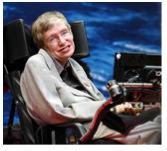题目内容
Most people agree that honesty is a good thing. But does Mother Nature agree? Animals can't talk, but can they lie in other ways? Can they lie with their bodies and behavior? Animal experts may not call it lying, but they do agree that many animals, from birds to chimpanzees, behave dishonestly to fool other animals. Why? Dishonesty often helps them survive.
Many kinds of birds are very successful at fooling other animals. For example, a bird called the plover sometimes pretends to be hurt in order to protect its young. When a predator(猎食动物)gets close to its nest, the plover leads the predator away from the nest. How? It pretends to have a broken wing. The predator follows the "hurt" adult, leaving the baby birds safe in the nest.
Another kind of bird, the scrub jay, buries its food so it always has something to eat. Scrub jays are also thieves. They watch where others bury their food and steal it. But clever scrub jays seem to know when a thief is watching them. So they go back later, unbury the food, and bury it again somewhere else.
Birds called cuckoos have found a way to have babies without doing much work. How? They don't make nests(鸟巢). Instead, they get into other birds' nests secretly. Then they lay their eggs and fly away. When the baby birds come out, their adoptive parents feed them.
Chimpanzees, or chimps, can also be sneaky. After a fight, the losing chimp will give its hand to the other. When the winning chimp puts out its hand, too, the chimps are friendly again. But an animal expert once saw a losing chimp take the winner's hand and start fighting again.
Chimps are sneaky in other ways, too. When chimps find food that they love, such as bananas, it is natural for them to cry out. Then other chimps come running. But some clever chimps learn to cry very softly when they find food. That way, other chimps don't hear them, and they don't need to share their food.
As children, many of us learn the saying "You can't fool Mother Nature." But maybe you can't trust her, either.

1.A plover protects its young from a predator by______.
A. getting closer to its young
B. driving away the adult predator
C. leaving its young in another nest
D. pretending to be injured
2.By "Chimpanzees, or chimps, can also be sneaky" (paragraph 5), the author means______.
A. chimps are ready to attack others
B. chimps are sometimes dishonest
C. chimps are jealous of the winners
D. chimps can be selfish too
3.Which of the following is true according to the passage?
A. Some chimps lower their cry to keep food away from others.
B. The losing chimp won the fight by taking the winner's hand.
C. Cuckoos fool their adoptive parents by making no nests.
D. Some clever scrub jays often steal their food back.
4.Which of the following might be the best title of the passage?
A. Do animals lie?
B. Does Mother Nature fool animals?
C. How do animals learn to lie?
D. How does honesty help animals survive?


